“If one should ask you concerning the spirit of a true Japanese, point to the wild cherry blossom shining in the morning sun.” – Motoori Norinaga (Japanese scholar)
Japan is a beautiful country that changes with each of the four seasons. To truly understand and appreciate Japan’s culture, beauty, and traditions, it’s important to choose the best time for your visit.
Now, we all dream of those pink cherry blossoms in full bloom, don’t we? But trust me, there’s so much more to Japan than just springtime. Each season here tells a different story- some delicate, some fiery, some loud with festivals, others whispering through snowflakes.
In this guide, I’ll walk you through Japan’s seasons the way locals experience them- what to expect, temperatures, festivals and events, and how to feel that magic, whether it’s under sakura skies, golden autumn leaves, summer fireworks, or snowy temple rooftops.
So, let’s find your perfect season to fall in love with Japan.
Spring in Japan (March to May)
Spring in Japan is a beautiful season that feels like heaven. From late March to early May, the entire country changes into a pastel wonderland of cherry blossoms.

The country becomes colourful with lush parks and serene temples. The famous sakura (cherry blossoms) bloom across cities like Tokyo, Kyoto, and Osaka, drawing locals and tourists alike.
Cultural landmarks become even more scenic with flower-framed views. So, it is the spring season that showcases Japan at its best. So, find your best stay and enjoy your time.
Things to do Spring Season in Japan:
- Tourists can partake in Hanami (flower viewing picnics).
- Nature lovers will enjoy the colourful neighbourhood of pink cherry blossoms, plum flowers, and wisteria that flourish during this time of year.
- Culture lovers can take a walk through the historic streets of Kyoto or see Mount Fuji with cherry blossoms in front.
Apart from the visual feast, spring also brings a festive vibe. Streets come alive with traditional events, seasonal delicacies, and a warm, cheerful vibe, making it ideal for first-timers and return visitors.
Spring Temperatures in Japan (March to May)
In spring, the weather in Japan is mild and pleasant. Here are the average temperatures:
- March: 8°C to 13°C
- April: 13°C to 18°C
- May: 17°C to 23°C
This season offers a comfortable climate for outdoor exploration, ideal for sightseeing, walking tours, and seasonal festivals. You’ll need a light jacket or sweater in March, while by May, sunny days make it perfect for light spring wear.
Spring Festivals and Events in Japan (March to May)
Hinamatsuri (Doll’s Festival)- 3rd March:
This festival is celebrated to pray for the health and happiness of young girls. Families display beautiful hina dolls and enjoy traditional foods to commemorate this special day.
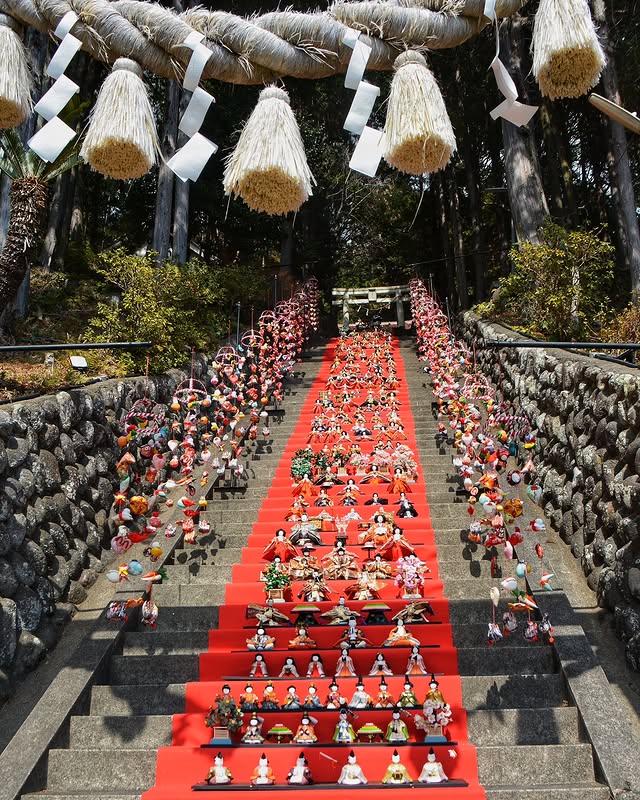
Cherry Blossom Viewing (Hanami) – Late March to Early April:
Cherry Blossom Viewing, or Hanami, is a Japanese tradition where people gather to admire blooming cherry blossoms. They enjoy picnics and celebrations under the sakura trees, appreciating the beauty of nature.
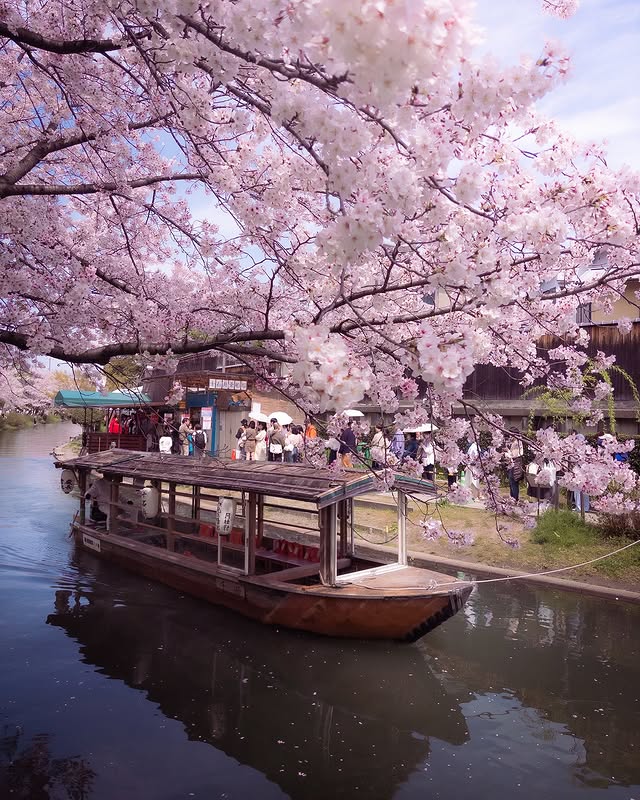
Takayama Spring Festival – Mid April:
This festival showcases beautifully decorated floats, lanterns and traditional performances in the charming mountain town of Takayama, Japan. The celebration honours the local deities and is a highlight of the region’s cultural heritage.
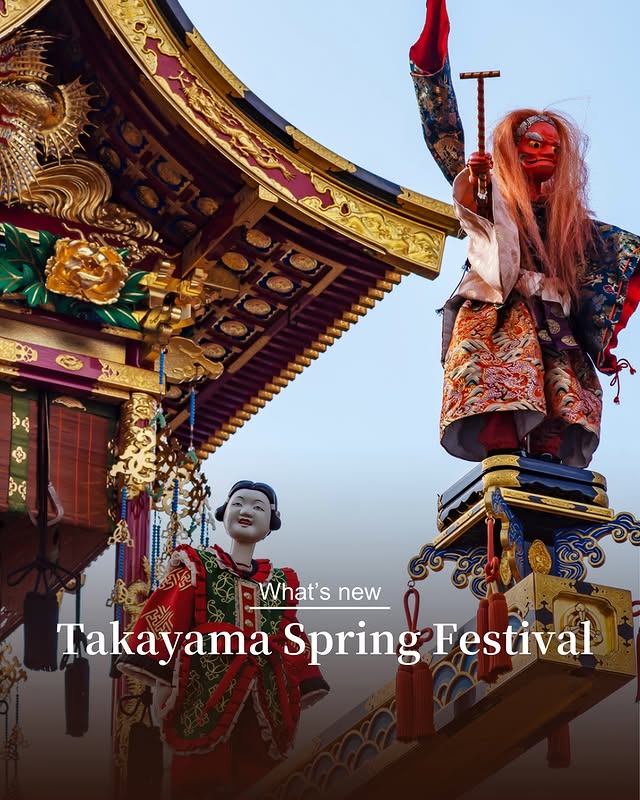
Miyako Odori in Kyoto – April:
The Miyako Odori is a traditional Japanese dance festival in Kyoto every April, featuring Geisha and Maiko performances.
This celebration of cherry blossoms and Japanese culture takes place at the Gion Kobu Kaburenjo Theatre, showcasing stunning dances and costumes. It’s a must-see thing to do during your visit to Kyoto! So, find your best place to stay and enjoy.
Fuji Shibazakura Festival – Mid April to Late May:
This festival features vibrant pink moss phlox blooming with Mount Fuji in the background. Visitors can enjoy beautiful flowers, local food stalls, and scenic views, making it a favourite for nature lovers and photographers.

Golden Week Holidays – End of April to Early May:
Golden Week in Japan, occurring from late April to early May, is a popular holiday period featuring multiple national holidays. It’s one of the busiest travel seasons for both locals and tourists.
Aoi Matsuri in Kyoto – 15th May:
It is one of the city’s oldest annual festivals. Featuring elegant parades with participants dressed in traditional Heian-period clothing, the event honours the rich cultural heritage of the region.
Pros and Cons of Visiting Japan in Spring
Visiting Japan in spring offers many advantages, but also comes with certain costs. So, check out in detail the pros and cons of visiting Japan in Spring-
| Pros: | Cons: |
| Cherry blossoms: This place is memorable and great for taking photos. |
High tourist traffic: Especially during peak sakura bloom and Golden Week |
|
Pleasant weather: Mild temperatures make sightseeing enjoyable. |
Higher prices: Accommodation and transport can be expensive. |
| Festive atmosphere: Numerous cultural festivals across the country |
Limited availability: Hotels often book up several months ahead. |
|
Seasonal cuisine: Enjoy spring delicacies like sakura mochi and bamboo shoots. |
Allergy season: Pollen levels rise, affecting sensitive tourists. |
Autumn in Japan (September to November)
Autumn in Japan is a beautiful season. The air is crisp, the leaves change colour, and the landscapes become calm.

As summer heat goes away, maple trees (momiji), ginkgo, and other deciduous trees turn bright red, orange, and gold. This change starts in northern Hokkaido in September and moves south, reaching Kyoto and Tokyo by November.
Japan’s historic temples, traditional gardens, and mountainous regions become strikingly beautiful when set against the bright hues of fall. Cities like Nikko, Kyoto, and Nara are especially popular for their scenic spots and reflective ponds framed by autumn leaves.
Things to do for tourists:
- Hiking
- Photography
- Enjoying outdoor onsens (hot springs)
With fewer typhoons and lower humidity, autumn offers a peaceful, romantic, and culturally immersive travel experience that rivals even the cherry blossom season.
Autumn Temperatures in Japan (September to November)
Autumn temperatures vary across Japan but are generally mild and comfortable:
- September: 21°C to 27°C (can still be humid, with occasional typhoons)
- October: 15°C to 22°C (ideal weather begins)
- November: 10°C to 17°C (cool, crisp air- perfect for leaf viewing)
Light layers or a medium jacket will suffice. By November, you might need warmer clothes, especially in higher altitudes or northern regions.
Autumn Festivals and Events in Japan (September to November)
Tsukimi (Moon Viewing Festival) – September:
It is a traditional Japanese celebration to admire the beauty of the full moon. People often celebrate by sharing rice dumplings and pampas grass to honour the moon and enjoy its beauty.
Kishiwada Danjiri Matsuri – Mid September:
The festival features ornate wooden floats called danjiri. Participants pull and race these floats through the streets. They feature traditional music and lively performances. This event showcases community spirit and cultural heritage.
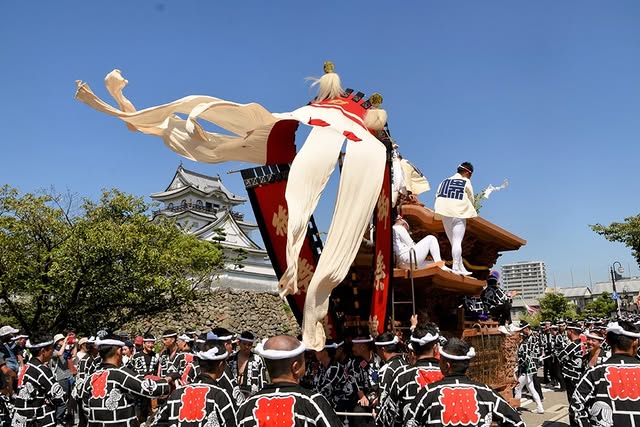
Nagoya Festival- Mid-October:
The festival celebrates culture through lively parades, traditional performances, and street events, showcasing the city’s history and local customs while attracting visitors from nearby areas.
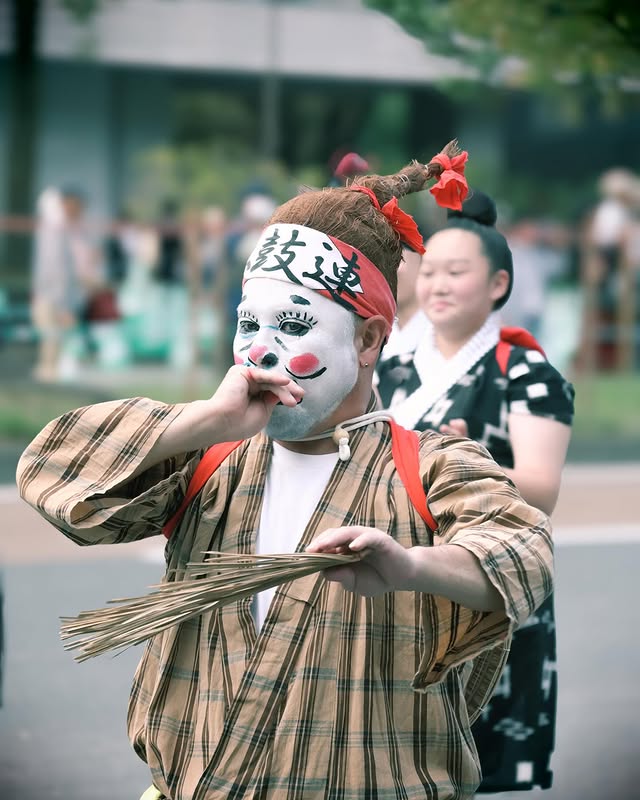
Takayama Autumn Festival – 9th & 10th October:
The festival features colourful floats and traditional performances, celebrating the area’s rich cultural heritage. Visitors can enjoy local crafts, food, and a lively atmosphere in the beautiful town of Takayama.

Jidai Matsuri (Kyoto) – 22nd October:
It is the Festival of Ages, which showcases a grand procession with participants dressed in historical costumes from various eras of Japanese history, honouring the city’s rich cultural heritage.
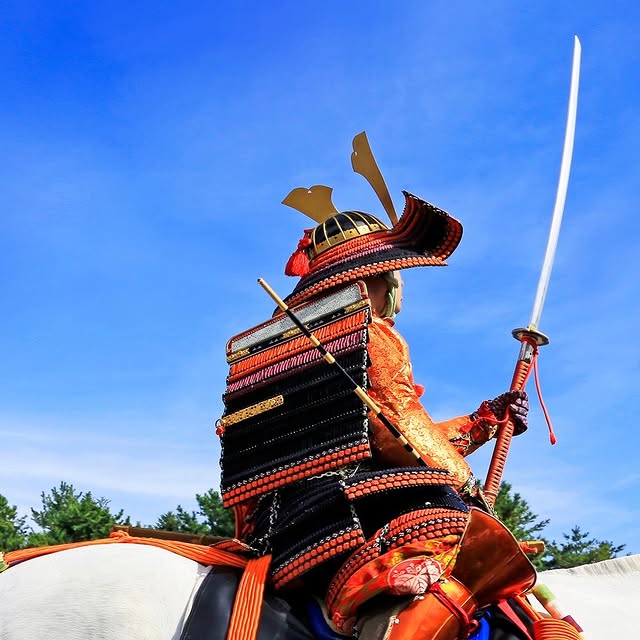
Kurama Fire Festival (Kyoto) – Late October:
The event features bright fire displays and traditional celebrations that honour the local culture. People carry torches and create a stunning show as they march through the streets, representing the community’s protection and its deities.
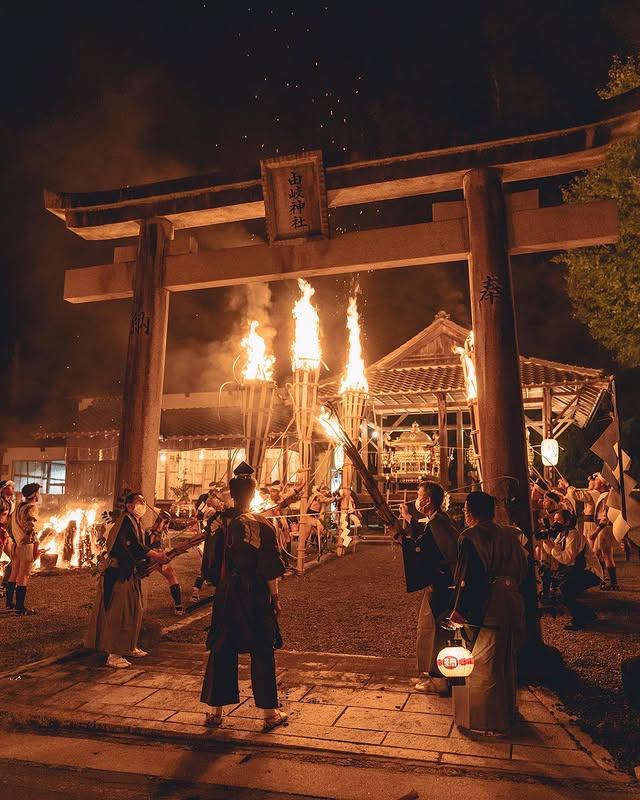
Autumn Leaf Viewing (Koyo) – Late October to November:
This tradition celebrates the stunning transformation of foliage as leaves change colours, drawing many to parks and scenic areas like Kyoto, Nara, and Nikko for brilliant views.
Shichi-Go-San Festival – 15th November:
This traditional Japanese festival is dedicated to the growth and well-being of children aged three, five, and seven years old. On this day, families dress their children in beautiful attire and visit shrines to pray for their health and happiness.
Pros and Cons of Visiting Japan in Autumn
Every season has its pros and cons; knowing beforehand gives you clarity. So, check out below if this season suits you well.
| Pros: | Cons: |
| Beautiful fall foliage: A visual treat that rivals cherry blossoms. |
Typhoon risk: Especially in early September, causing travel delays. |
|
Comfortable climate: Clear skies and cool temperatures for sightseeing. |
Shorter daylight hours: Especially by November, it will affect travel plans. |
|
Festivals galore: Rich cultural experiences and local traditions. |
Popular with locals and tourists: Famous koyo spots can get crowded. |
|
Seasonal food: Chestnuts, sweet potatoes, matsutake mushrooms, and persimmons. |
Fluctuating temperatures: May require layered clothing throughout the day. |
Now, if you are wondering, is Winter or Summer even a preferred season to visit Japan? The answer depends on what type of tourist you are. The answer depends on what type of tourist you are. Here’s a quick comparison to help you understand whether Winter or Summer is a preferred time to visit Japan:
Winter in Japan (December to February)
Winter in Japan is meant for snow lovers. They get a lot of things to do, which makes their vacation memorable. Winter in Japan offers snow enthusiasts a memorable vacation filled with unique activities.
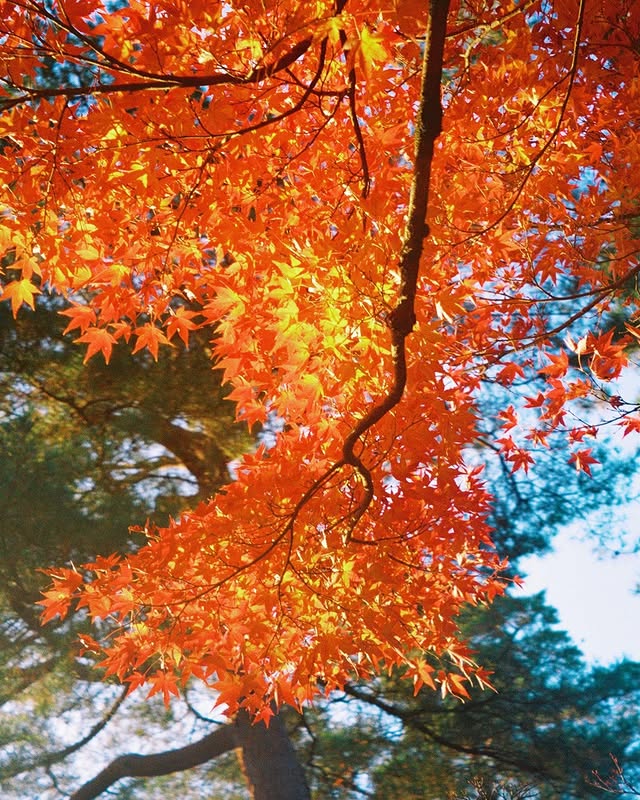
Why People Love It:
- World-class skiing: Resorts in Hokkaido and Nagano offer powder snow among the best in the world.
- Snow festivals: The Sapporo Snow Festival is magical with its massive ice sculptures.
- Fewer tourist crowds: Big cities like Kyoto and Tokyo are less crowded.
- Onsen experience: Soaking in a hot spring while surrounded by snow is unforgettable.
So, if you want to visit the capital city, this is the right time to explore the best places to visit in Tokyo and experience this lively city. And choose to book your best place to stay in Tokyo next to a station to save money and time.
Disadvantages:
- Very cold: Especially in the north and mountainous regions.
- Short daylight: Less time for sightseeing.
- Not ideal for cherry blossoms or foliage: Landscapes are stark outside snow zones.
Best for: Snow sports enthusiasts, onsen seekers, and people who prefer fewer crowds.
Summer in Japan (June to August)
Summer in Japan is characterised by high temperatures and high humidity levels, making it a season known for sweltering weather. The combination often leads to a vibrant atmosphere filled with festivals and outdoor activities despite the heat.
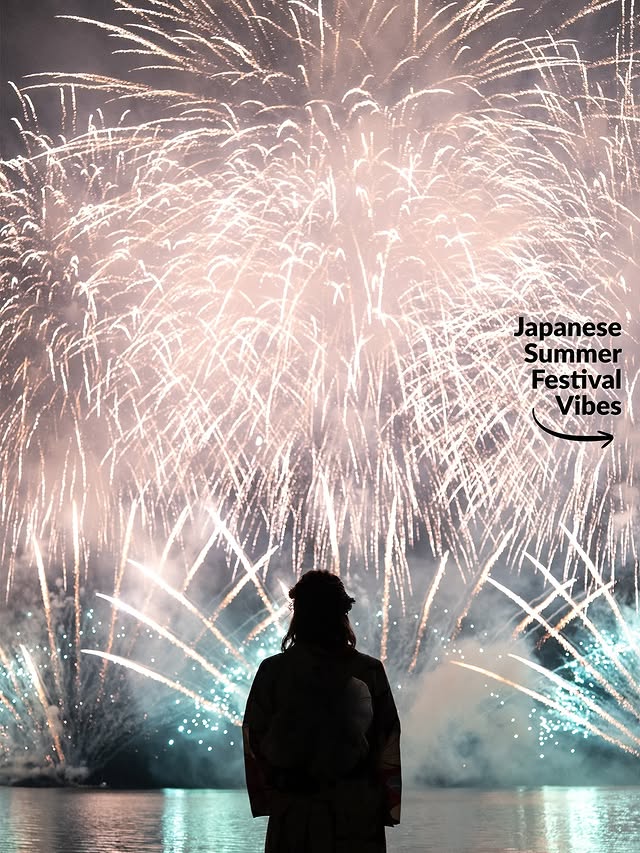
Why people love it:
- Lively festivals: Think Gion Matsuri (Kyoto), Tanabata, and epic fireworks shows.
- Mountain escapes: Hiking in the Japanese Alps or Hokkaido is popular.
- Beach time: Okinawa and coastal areas are stunning in summer.
Disadvantages:
- Hot and humid: Tokyo and Osaka can be uncomfortably sticky.
- Typhoon risk: Especially from late July to September.
- Crowds during Obon: Domestic travel spikes in mid-August.
Best for: Festival lovers, hikers, and travellers looking to explore islands or beaches.
Conclusion
So, if you want to decide the best time to visit Japan, figure out what you like. Many people prefer Spring (March to May) and Autumn (September to November) because of the nice weather, beautiful scenery, and cultural events.
In Spring, you can see the famous cherry blossoms. In Autumn, the leaves turn vibrant red and gold, creating stunning views and festive vibes.
However, Winter (December to February) is an underrated time, perfect for those seeking world-class ski resorts, magical snow festivals, and relaxing hot spring escapes amid snowy backdrops.
On the other hand, Summer (June to August) bursts with energy through traditional festivals and fireworks but may not be ideal for everyone due to its high humidity, heat, and occasional typhoons.
Ultimately, Japan is a year-round destination- choose the season that matches your travel style and interests for a truly memorable experience.
Ready to experience the magic of Japan in your favourite season? Start planning your perfect trip today– book your flights, explore seasonal guides, and discover the best of Japan tailored to your travel style!
Frequently Asked Questions on the best time to visit Japan
When is the cherry blossom season in Japan?
Cherry blossoms bloom beautifully from late March to early April, making this the ideal time to visit and fully enjoy their captivating display!
Is autumn the right time to visit Japan?
Absolutely! October to November brings cooler weather and stunning red, orange, and yellow leaves across parks, temples, and mountains.
Is summer too hot to travel in Japan?
July and August can be hot and humid, especially in cities like Tokyo and Osaka. But it’s also festival season, with fireworks, yukatas, and lively street celebrations.
Can I visit Japan in winter?
Yes, only if you are a snow lover, December to February is the right time. Head to Hokkaido for skiing or relax in a traditional onsen with snowy views.
Is there a rainy season in Japan?
Yes. The rainy season (tsuyu) typically runs from early June to mid-July. It’s not ideal for sightseeing, but it’s less crowded and still manageable with an umbrella.